 W
WJohn Adams, known as Jack Adams, was the last survivor of the Bounty mutineers who settled on Pitcairn Island in January 1790, the year after the mutiny. His real name was John Adams, but he used the name Alexander Smith until he was discovered in 1808 by Captain Mayhew Folger of the American whaling ship Topaz. His children used the surname "Adams".
 W
WJohn Auger was a pirate active in the Bahamas around 1718. He is primarily remembered for being captured by pirate turned pirate-hunter Benjamin Hornigold.
 W
WJonathan Barnet was an English privateer active in the Caribbean. He is best known for capturing pirates Calico Jack, Anne Bonney, and Mary Read.
 W
WCharles Bellamy was an English pirate who raided colonial American shipping in New England and later off the coast of Canada. He is often confused with the more well-known Samuel "Black Sam" Bellamy, as they operated in the same areas at the same time.
 W
WCaptain Samuel Bellamy, later known as "Black Sam" Bellamy, was an English pirate who operated in the early 18th century. He is best known as the wealthiest pirate in recorded history, and one of the faces of the Golden Age of Piracy. Though his known career as a pirate captain lasted little more than a year, he and his crew captured at least 53 ships. Called "Black Sam" in Cape Cod folklore because he eschewed the fashionable powdered wig in favor of tying back his long black hair with a simple band, Bellamy became known for his mercy and generosity toward those he captured on his raids. This reputation earned him another nickname, the "Prince of Pirates". He likened himself to Robin Hood, with his crew calling themselves "Robin Hood's Men".
 W
WEdward Teach, better known as Blackbeard, was an English pirate who operated around the West Indies and the eastern coast of Britain's North American colonies. Little is known about his early life, but he may have been a sailor on privateer ships during Queen Anne's War before he settled on the Bahamian island of New Providence, a base for Captain Benjamin Hornigold, whose crew Teach joined around 1716. Hornigold placed him in command of a sloop that he had captured, and the two engaged in numerous acts of piracy. Their numbers were boosted by the addition to their fleet of two more ships, one of which was commanded by Stede Bonnet; but Hornigold retired from piracy toward the end of 1717, taking two vessels with him.
 W
WStede Bonnet was an early eighteenth-century Barbadian pirate, sometimes called "The Gentleman Pirate" because he was a moderately wealthy land-owner before turning to a life of crime. Bonnet was born into a wealthy English family on the island of Barbados, and inherited the family estate after his father's death in 1694. In 1709, he married Mary Allamby, and engaged in some level of militia service. Because of marital problems, and despite his lack of sailing experience, Bonnet decided he should turn to piracy in the summer of 1717. He bought a sailing vessel, named it Revenge, and travelled with his paid crew along the Eastern Seaboard of what is now the United States, capturing other vessels and burning other Barbadian ships.
 W
WAnne Bonny was an Irish pirate operating in the Caribbean, and one of the most famous female pirates of all time. The little that is known of her life comes largely from Captain Charles Johnson's A General History of the Pyrates.
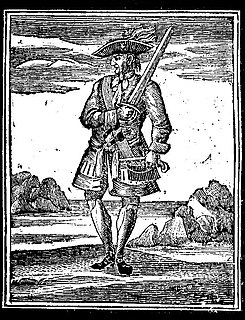 W
WJohn Rackham, commonly known as Calico Jack, was an English pirate captain operating in the Bahamas and in Cuba during the early 18th century. His nickname was derived from the calico clothing that he wore, while Jack is a nickname for "John".
 W
WCampuzano Polanco was a prominent family from the colony of Santo Domingo with origins in Santiago de los Caballeros. During the colonial era of the Hispaniola, their members and descendants went on to occupy high political, military and ecclesiastical positions, locally and outside the Island, as well as in the metropolis of Spain. Their merits extend since the beginning and until the end of the colony.
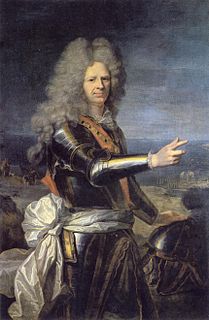 W
WJean-Baptiste du Casse was a French privateer, admiral, and colonial administrator who served throughout the Atlantic World during the 17th and 18th centuries. Likely born 2 August 1646 in Saubusse, near Pau (Béarn), to a Huguenot family, du Casse joined the French merchant marine and served in the East India Company and the slave-trading Compagnie du Sénégal. Later, he joined the French Navy and took part in several victorious expeditions during the War of the League of Augsburg in the West Indies and Spanish South America. During the War of the Spanish Succession, he participated in several key naval battles, including the Battle of Málaga and the siege of Barcelona. For his service, he was made a knight of the Order of the Golden Fleece by King Philip V of Spain. In the midst of these wars, he was Governor of the colony of Saint-Domingue from 1691-1703. He ended his military career at the rank of Lieutenant General of the naval forces and Commander of the Royal and Military Order of Saint Louis. He died on 25 June 1715 in Bourbon-l'Archambault, Auvergne.
 W
WFletcher Christian was master's mate on board HMS Bounty during Lieutenant William Bligh's voyage to Tahiti during 1787–1789 for breadfruit plants. In the mutiny on the Bounty, Christian seized command of the ship from Bligh on 28 April 1789. Some of the mutineers were left on Tahiti, while Christian, eight other mutineers, six Tahitian men and eleven Tahitian women settled on isolated Pitcairn Island, and Bounty was burned. After the settlement was discovered in 1808, the sole surviving mutineer gave conflicting accounts of how Christian died.
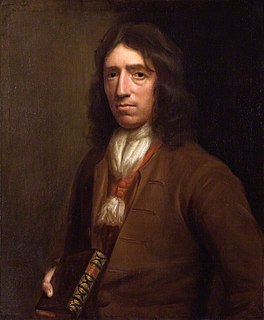 W
WWilliam Dampier was an English explorer, pirate, and navigator who became the first Englishman to explore parts of what is today Australia, and the first person to circumnavigate the world three times. He has also been described as Australia's first natural historian, as well as one of the most important British explorers of the period between Sir Walter Raleigh and James Cook.
 W
WHowell Davis, also known as Hywel and/or Davies, was a Welsh pirate. His piratical career lasted just 11 months, from 11 July 1718 to 19 June 1719, when he was ambushed and killed. His ships were the Cadogan, Buck, Saint James, and Rover. Davis captured 15 known English and French ships.
 W
WRobert Deal was a pirate active in the Caribbean. He is best known for his association with Charles Vane.
 W
WJohn Derdrake, known as “Jack of the Baltic,” was a Danish pirate active in the 1700s. His story, if true, makes him one of the few pirates known to force his victims walk the plank.
 W
WJean Thomas Dulaien was a French pirate active in the Caribbean. He is known for preserved copies of his Articles and black flag.
 W
WEdward England was an Irish-born pirate. The ships he sailed on included the Pearl and later the Fancy, for which England exchanged the Pearl in 1720. His flag was the classic Jolly Roger — almost exactly as the one "Black Sam" Bellamy used — with a skull above two crossed bones on a black background. Like Bellamy, England was known for his kindness and compassion as a leader, unlike many other pirates of the time.
 W
WJohn Evans was a Welsh pirate who had a short but successful career in the Caribbean.
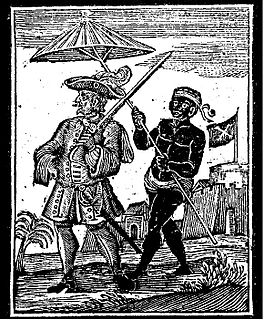 W
WHenry Every, also known as Henry Avery, sometimes erroneously given as Jack Avery or John Avery, was an English pirate who operated in the Atlantic and Indian oceans in the mid-1690s. He probably used several aliases throughout his career, including Benjamin Bridgeman, and was known as Long Ben to his crewmen and associates.
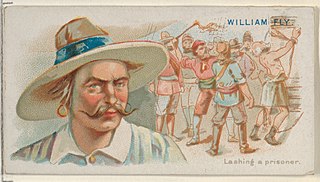 W
WCaptain William Fly was an English pirate who raided New England shipping fleets for three months in 1726 until he was captured by the crew of a seized ship. He was hanged in Boston, Massachusetts and his body publicly exhibited as a warning to other pirates. His death is considered by many to mark the end of the Golden Age of Piracy.
 W
WCaptain Gincks was a privateer based in New York. He is best known for sailing alongside Adrian Claver, and for a violent incident involving his sailors while ashore.
 W
WThe Golden Age of Piracy is a common designation for the period between the 1650s and the 1730s, when maritime piracy was a significant factor in the histories of the Caribbean, the United Kingdom, Indian Ocean states, North America, and West Africa.
 W
WJohn Halsey was a British privateer and a later pirate who was active in the Atlantic and Indian Oceans during the early 18th century. Although much of his life and career is unknown, he is recorded in A General History of the Pyrates which states "He was brave in his Person, courteous to all his Prisoners, lived beloved, and died regretted by his own People. His Grave was made in a garden of watermelons, and fenced in with Palisades to prevent his being rooted up by wild Hogs."
 W
WMicajah "Big" Harpe, born Joshua Harper, and Wiley "Little" Harpe, born William Harper, were murderers, highwaymen and river pirates who operated in Tennessee, Kentucky, Illinois and Mississippi in the late 18th century. They are often considered the earliest documented serial killers in the United States history.
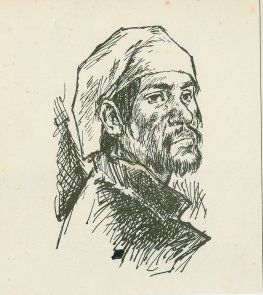 W
WD. Miguel Enríquez, was a privateer from San Juan, Puerto Rico who operated during the early 18th century. A mulatto born out of wedlock, Enríquez was a shoemaker by occupation. After working for the governor as a salesman he was recruited to defend Puerto Rico, then a colony of the Spanish Empire, and commanded a small fleet that intercepted foreign merchant ships and other vessels dedicated to contraband. These outlaws were thriving in the waters of the Caribbean Sea and the Atlantic Ocean, notably in the areas surrounding Saint Thomas, Curaçao and Jamaica. Operating during the height of the Golden Age of Piracy, his fleet was also credited with controlling the proliferation of buccaneers in the region. However, he was considered a pirate himself by the enemies of Spain, since it was common practice of the government to ignore when foreign ships were attacked. After some time operating independently, Enríquez received a letter of marque and reprisal from the Spanish Crown, this was a special permit granting him the privileges of a privateer. Corsairs from Puerto Rico were often called guardacostas, or "coast guards." They operated in the same fashion as any other pirate, the only difference was that they did it in the name of Spain, protecting imperial trade restrictions. Employing a systematic approach, Enríquez was able to become the most successful and influential Puerto Rican of his time. However, despite this, he was never able to gain the acceptance of the higher social classes, something that he strived to earn throughout his life.
 W
WHMS Hermione was the lead ship of the Hermione-class, a six-ship class of 32-gun fifth-rate frigates of the Royal Navy. She was launched on 9 September 1782 at Bristol. Hermione was commissioned and then paid off a number of times during the 1780s. She underwent repairs between October 1790 and June 1792, followed by a period spent refitting at Chatham Dockyard until January 1793. She was recommissioned in December 1792 before sailing to the Jamaica in March 1793. Hermione served in the West Indies during the early years of the French Revolutionary Wars, participating in the British attack on Port-au-Prince, where she led a small squadron that accompanied troop transports.
 W
WPeter Heywood was a British naval officer who was on board HMS Bounty during the mutiny of 28 April 1789. He was later captured in Tahiti, tried and condemned to death as a mutineer, but subsequently pardoned. He resumed his naval career and eventually retired with the rank of post-captain, after 29 years of honourable service.
 W
WCaptain Richard Avery Hornsby ( -1819) is an almost forgotten Sunderland military figure from the 18th century. He became famous after taking on a boat full of French pirates almost single-handedly - and winning.
 W
WThomas Howard was a pirate primarily active in the Indian Ocean and the Red Sea during the Golden Age of Piracy. He served under other pirates of the time, including George Booth and John Bowen. He also commanded the 36-gun Prosperous. He later retired to Rajapur, in India, where he married a local woman. He was later murdered by her relatives.
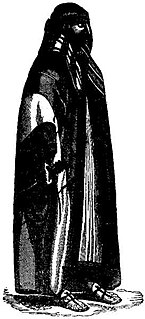 W
WRahmah ibn Jabir ibn Adhbi Al Jalhami was an Arab ruler in the Persian Gulf region and was described by his contemporary, the English traveler and author, James Silk Buckingham, as ‘the most successful and the most generally tolerated pirate, perhaps, that ever infested any sea.’
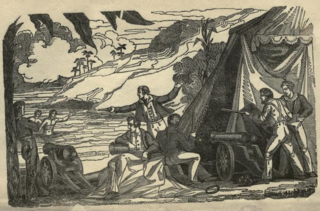 W
WHenry Johnson was an Irish pirate active in the Caribbean. He shared captaincy with a Spaniard, Pedro Poleas. Johnson was best known thanks to an autobiography written by a sailor he captured and marooned.
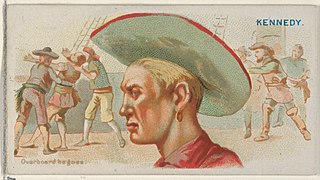 W
WWalter Kennedy was an English pirate who served as a crew member under Howell Davis and Bartholomew Roberts.
 W
WJohn Leadstone was a pirate and slaver active off the west coast of Africa. Often called “Captain Crackers” or “Old Captain Cracker,” he is best known for his actions against the English Royal African Company and for his brief involvement with Bartholomew Roberts.
 W
WOlivier Levasseur, was a French pirate, nicknamed La Buse or La Bouche in his early days for the speed and ruthlessness with which he always attacked his enemies as well as his ability to verbally attack his opponents. He is known for allegedly hiding one of the biggest treasures in pirate history, estimated at over £1 billion, and leaving a cryptogram behind with clues to its whereabouts.
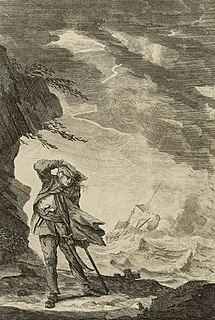 W
WEdward "Ned" Low was a notorious pirate of English origin during the latter days of the Golden Age of Piracy, in the early 18th century. Low was born into poverty in Westminster, London, and was a thief from an early age. He moved to Boston, Massachusetts, as a young man. His wife died in childbirth in late 1719. Two years later, he became a pirate, operating off the coasts of New England and the Azores, and in the Caribbean.
 W
WPhilip Lyne was a pirate known for his cruelty and his association with Francis Spriggs.
 W
WJohn Martel was a French pirate active in the Caribbean.
 W
WSamuel Ross Mason, also spelled Meason, was a Virginia militia captain, on the American western frontier, during the American Revolutionary War. After the war, he became the leader of the Mason Gang, a criminal gang of river pirates and highwaymen on the lower Ohio River and the Mississippi River in the late 18th and early 19th centuries. He was associated with outlaws around Red Banks, Cave-in-Rock, Stack Island, and the Natchez Trace.
 W
WEtienne de Montauban was a French flibustier (buccaneer), privateer, and pirate active in the Caribbean and off the west African coast. Frequently referred to as Sieur de Montauban, he wrote an account of his later voyages including surviving a shipwreck.
 W
WChristopher Moody was a pirate as a member of Bartholomew Roberts' crew but was never a Captain in his own right. He is best known not for his own actions but for a popular Jolly Roger flag mis-attributed to him as well as for later authors confusing him with unrelated pirate William Moody.
 W
WThe mutiny on the Royal Navy vessel HMS Bounty occurred in the South Pacific Ocean on 28 April 1789. Disaffected crewmen, led by Lieutenant Fletcher Christian, seized control of the ship from their captain, Lieutenant William Bligh, and set him and 18 loyalists adrift in the ship's open launch. The mutineers variously settled on Tahiti or on Pitcairn Island. Bligh navigated more than 3,500 nautical miles in the launch to reach safety, and began the process of bringing the mutineers to justice.
 W
WCaptain Napin was a pirate active in the Caribbean and off the American east coast. He is best known for sailing alongside Benjamin Hornigold.
 W
WThomas Nichols was a pirate active in the Caribbean and off the American east coast. He is best known as a leader among the "Flying Gang" of pirates operating out of New Providence.
 W
WNathaniel North was a Bermuda-born pirate during the Golden Age of Piracy, operating in the Indian Ocean under John Bowen and then as captain of the Defiant following Bowen's retirement in 1704. After losing the Defiant he ruled a pirate colony at Ambonaivo made up of his former crew before returning to sea. Retiring with great wealth in 1709, North settled in Madagascar and married a local woman, but was murdered by her family.
 W
WJames Plaintain was a pirate active in the Indian Ocean. He is best known for using his pirate wealth to found a short-lived kingdom on Madagascar.
 W
WMary Read, also known as Mark Read, was an English pirate. She and Anne Bonny are two of the most famed female pirates of all time, and among the few women known to have been convicted of piracy during the early 18th century, at the height of the "Golden Age of Piracy".
 W
WBartholomew Roberts, born John Roberts, was a Welsh pirate who raided ships off the Americas and West Africa between 1719 and 1722. He was the most successful pirate of the Golden Age of Piracy as measured by vessels captured, taking over 400 prizes in his career. He is also known as Black Bart, but this name was never used in his lifetime.
 W
WPhilip Roche (1693–1723) was an Irish pirate active in the seas of northern Europe, best known for murdering the crews and captains of ships he and his men took over.
 W
WAmaro Rodríguez-Felipe y Tejera Machado, better known as Amaro Pargo, was a famous Spanish corsair. He was one of the most renowned corsairs of the Golden Age of Piracy and one of the most prominent personalities of 18th-century Spain.
 W
WJohn Russell was a pirate active from Nova Scotia to the Caribbean to the African coast. He is best known for his association with Edward Low and Francis Spriggs, and for his involvement with two well-known and well-documented maroonings.
 W
WJacque Alexander Tardy better known as "Tardy the Pirate", was an unsuccessful and atypical pirate who usually poisoned his victims. Most known for his last act of piracy of the brig Crawford. He wore a blue velvet frock coat, carried a cane and was small of stature with fine features and a dark complexion. At the time of his death he had grey hair and wore dentures.
 W
WVan Tuyl is the surname of the Dutch family from which many North American Van Tuyls, Van Tuyles, Van Tyls and Van Tyles are descended. The family name derives from the ancient village of Tuil (Tuÿl), in the central Netherlands. The family's earliest proven ancestor is the 14th-century knight Heer Ghijsbrecht van Tuyl of Gelre. This family is distinct from the Van Tuyll van Serooskerken family.
 W
WThe Whydah Gally was a fully rigged galley ship that was originally built as a passenger, cargo, and slave ship. On the return leg of its maiden voyage of the triangle trade, the Whydah was captured by the pirate Captain Samuel "Black Sam" Bellamy, beginning a new role in the Golden Age of Piracy.
 W
WRichard Worley was a pirate who was active in the Caribbean Sea and the east coast of the American colonies during the early 18th century.